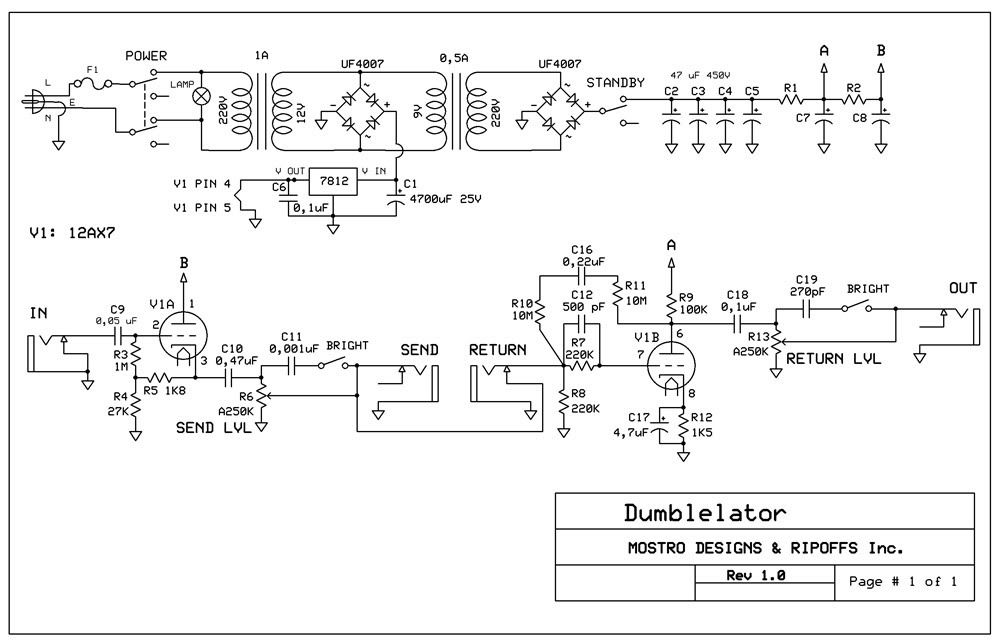Hi people, I recently finished my first tube amp, it has a passive FX loop, just a send and return jack between the last preamp gain stage and the phase inverter. As it is now it´s pretty useless, so I tried to make an external JFET-based active loop, but that never worked well (not enough headroom). So I decided to make a tube one, it´s the Dumblelator. I had to adapt it to what I can make, but since I don´t have that much experience with tubes, I have some questions for you.
Here´s my schem:

Questions:
1) I´m gonna power the tube heaters with 12V DC.It should actually be 12.6V, but with a 7812 regulator I´ll get 12V. Is that OK, or will it be bad for the tube?
2) Regarding supply voltages: Using xformers back to back like shown, I calculated that I´ll get, at the 2nd xformer primary (220V side) around 293V. After the rectifier bridge, I should get 293 x 1,414= 414,69V DC minus the diodes drop (all this is theory, haven´t tried it yet). Now, the part of the schem from the standby switch to the A and B points I´m not that sure... The point A is supposed to get 368V, and the point B 256V. I´m not that sure of how to get those values... I guess R1 and R2 could be 22K, and C7 / C8 could be 22uF? Also, are C2/3/4/5 too much filtering? could I do with just two 47 uF caps? That part of the schem is a gray area to me...
3) About the fuse F1, I´m not that sure of the value. Would 1A slo blo be OK? Or less?
4) anything else you see that wouldn´t work?
Thanks for reading! Any help will be useful.
Here´s my schem:

Questions:
1) I´m gonna power the tube heaters with 12V DC.It should actually be 12.6V, but with a 7812 regulator I´ll get 12V. Is that OK, or will it be bad for the tube?
2) Regarding supply voltages: Using xformers back to back like shown, I calculated that I´ll get, at the 2nd xformer primary (220V side) around 293V. After the rectifier bridge, I should get 293 x 1,414= 414,69V DC minus the diodes drop (all this is theory, haven´t tried it yet). Now, the part of the schem from the standby switch to the A and B points I´m not that sure... The point A is supposed to get 368V, and the point B 256V. I´m not that sure of how to get those values... I guess R1 and R2 could be 22K, and C7 / C8 could be 22uF? Also, are C2/3/4/5 too much filtering? could I do with just two 47 uF caps? That part of the schem is a gray area to me...
3) About the fuse F1, I´m not that sure of the value. Would 1A slo blo be OK? Or less?
4) anything else you see that wouldn´t work?
Thanks for reading! Any help will be useful.
Comment